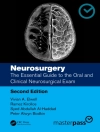This book is the first available practical manual on the open abdomen. Practicing physicians, surgeons, anesthesiologists, nurses, and physiotherapists will find in it a ready source of information on all aspects of open abdomen management in a wide variety of settings. The coverage includes, for example, the open abdomen in trauma, intra-abdominal sepsis, and acute pancreatitis, step-by-step descriptions of different techniques with the aid of high-quality color figures, guidance on potential complications and their management, and features of management in different age groups. The book contents illustrate the most recent innovations and drawing upon a thorough and up-to-date literature review. Useful tips and tricks are highlighted, and the book is designed to support in daily decision making. The authors include worldwide opinion leaders in the field, guaranteeing the high scientific value of the content.
表中的内容
Foreword.- Preface.- 1 Background historical notes.- 2 Basic research in open abdomen.- 3 Anatomy and physiology: the abdomen, the intra-abdominal pressure, hypertension, abdominal compartment syndrome, abdominal wall compliance, measuring systems.- 4 Pathophysiology of the open abdomen: benefits and problems. The metabolic cost and benefit.- 5 Indications for open abdomen.- 6 The open abdomen in trauma.- 7 The open abdomen in intra-abdominal sepsis.- 8 The open abdomen in acute pancreatitis.- 9 The open abdomen in vascular emergencies.- 10 The management of the open abdomen: the temporary closure systems (Not vacuum assisted systems, Vacuum assisted non-commercial systems, Vacuum assisted commercial systems.- 11 The role of instillation in open abdomen management.- 12 The open abdomen in infants and children.- 13 The management of the open abdomen in ICU in adults.- 14 The management of the open abdomen in ICU in children.- 15 Nutrition in open abdomen patients.- 16 The nursing management of open abdomen patients.- 17 Complications of the open abdomen and their management.- 18 Mistakes in open abdomen interventions.- 19 The definitive closure, long-term results and management of ventral hernia.- 20 Abdominal wall reconstruction with biological prosthesis.- 21 Rehabilitative process, functional impairment and quality of life.- 22 Results of treatment with open abdomen and future perspectives.
关于作者
Federico Coccolini, MD, is currently working as a general, emergency and trauma surgeon at the General, Emergency and Trauma Surgery Dept. of Bufalini Hospital in Cesena (Italy). His main fields of interest are emergency surgery, trauma surgery, trauma patient management, as well as emergency and trauma system organization and implementation, and abdominal surgery. He has published widely (more than 100 papers) and has written several book chapters, most of them as first author. i He is the main investigator of IROA (International Register of Open Abdomen), the widest multicenter cohort study on open abdomen patients ever performed, which is recruiting hundreds of patients from all around the world.
Rao Ivatury, MD, is Professor Emeritus at Virginia Commonwealth University (Richmond, Virginia, USA). He used to be Chair of the Division of Trauma, Critical Care, and Emergency Surgery at the VCU Medical Center. He has been involved in the “open abdomen andabdominal compartment syndrome in trauma and sepsis” for more than two decades and was one of the earliest pioneers, as documented by his impressive and pivotal scientific output. He was a Vice-President of the American Association of Surgery of Trauma and is a past President of the Panamerican Trauma Society (PTS) and the World Society of Abdominal Compartment Syndrome (WSACS). He was co-editor of the monograph Abdominal Compartment Syndrome and is the author of more than 300 scientific publications. He is the current executive director of PTS.
Michael Sugrue, MD, was appointed Professor of Surgery at the University of New South Wales and Liverpool Hospital in Sydney in 2005, after working there as a specialist surgeon for 15 years. He was a founder of the World Society of Abdominal Compartment Syndrome (WSACS) and a former President of the organization. He has received many awards for his dedication to and achievements in medical education and research, including the prestigious ESR Hughes Award from the Australasian College of Surgeons in 2008. He has established surgical training courses in many countries, including Canada, Portugal, Spain, Singapore, Thailand, and New Zealand. Currently he is employed as a surgeon in Letterkenny Hospital, Donegal, and Galway University Hospital. He is secretary of the Donegal Clinical Academy Trust.
Luca Ansaloni, MD, is director of the General, Emergency and Trauma Surgery Dept. of Bufalini Hospital in Cesena (Italy) and Professor at the Milan University’s General and Emergency Surgery Residency School. He has extensive experience in managing post-traumatic and non-post-traumatic open abdomen patients, and as a war surgeon in Africa and Afghanistan. He has authored hundreds of scientific articles and book chapters. He is past- president of the World Society of Emergency Surgery (WSES).












